Bronze Age
a. 3m mid-section reconstruction at full scale
b. half scale reconstruction of the whole boat
4. Seahenge
1. The Dover Bronze Age Boat
a. 1996 3m mid-section reconstruction at full scale
The Dover boat was discovered 6m below the ground in Dover in 1992. It’s a large, Bronze Age, prehistoric sewn-plank boat, dated c. 1550 BC. Over 9m of an estimated total length of 17m of the boat was recovered. The boat consisted of four sculpted oak planks, joined together by sets of yew withy stitches, wedges and larger timbers. It is one of the best preserved complex prehistoric boats to be found in Europe. The excavation was described in Current Archaeology.
Richard Darrah was involved both in examining and drawing conclusions about the timber used in the boat and in a subsequent reconstruction. He contributed three chapters to the book ‘The Dover Bronze Age Boat’ (Clark, P, Ed. English Heritage, 2004). He also prepared a museum display for Dover Museum.
Chapter 6: Illuminating the original shape of the Dover boat timbers
A comparison was made between the characteristics of the oak timber excavated and modern oak. This comparison allowed conclusions to be drawn about how the wood of the original boat compressed during its 3 ½ thousand years under 6m of soil. Correcting for this distortion of the timber enabled the original boat dimensions to be estimated, and helped our understanding of the shape, construction and functioning of the boat.
Chapter 7: Woodland Management and Timber conversion
The size and quality of the oak trees from which the“planks” of the original boat were shaped and how this timber would have been extracted from the woodland were discussed. Evidence suggests that the timber came from several different trees. The trees had straight trunks at least 13m long and 1m in diameter. This type of wood will have come from a dense, high forest.
The time involved in felling, halving and cutting the tree to length is estimated at 100 skilled person hours and the time taken to move the timber was estimated at 200 person hours/mile travelled.
Chapter 9: The reconstruction experiment
In 1996 a 3m long reconstruction of the midsection of the boat was undertaken, using Bronze Age tools. Two oak logs were used. There were four main stages to the reconstruction:
- Making the tools
- Splitting the logs
- Shaping the planks
- Assembling the boat
Lessons were learnt about the production and use of bronze tools and about how the joints and waterproofing of the boat worked. From the time taken to make the reconstruction, construction time of the original Dover boat was estimated as 10 people, working 8 hours days, taking 25 days (2000 person hours). However, in Richard’s later experience even this is an underestimate.
Clark, P, Ed. The Dover Bronze Age Boat. English Heritage, 2004.
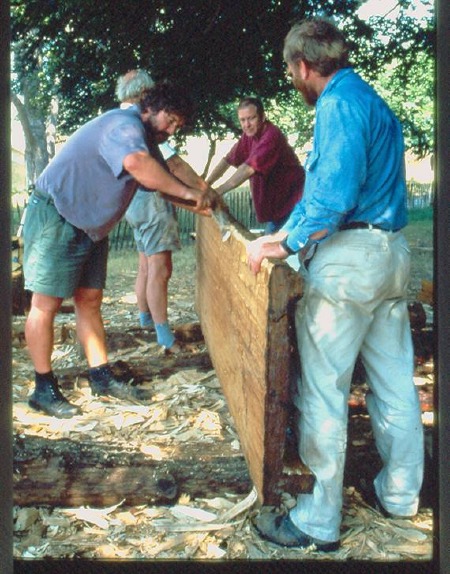
Making one of the bottom planks for the 3m section of the full scale reconstruction, Dover 1996. Damian Goodburn and Richard Darrah with 2 helpers. Photo © Canterbury Archaeological Trust.
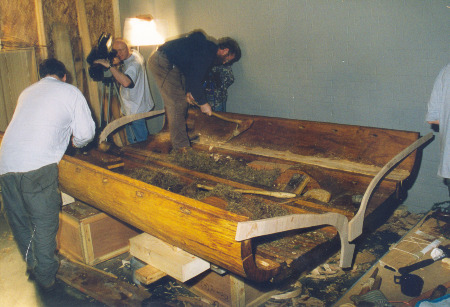
Adding the final touches to the reconstruction of the full scale mid-section, Dover 1999. Photo © Canterbury Archaeological Trust.
Museum Display
Richard produced a museum display for Dover Museum, showing a section of the Dover boat. This demonstrates how the moss packing makes the boat waterproof.
http://www.dover.gov.uk/museum/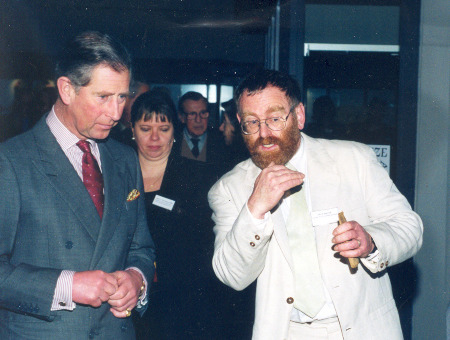
Richard talking to Prince Charles on a visit to Dover Museum. Photo © Dover Museum.
b. 2011-2012 - half scale reconstruction of the whole Dover boat
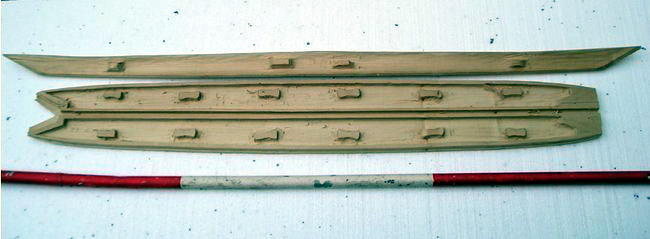
1/10 scale model of the Dover Boat, carved in lime wood. This was used to understand how the timbers would bend to shape. The white section of the scale is 0.5m. Photo © Richard Darrah.
In 2011 the European Union agreed to fund 'Boat 1550 BC' which brought together seven partners from the UK, France and Belgium to put together an exhibition on Bronze Age trade and culture. One part of the remit was to build a half scale replica of the whole Dover Bronze Age Boat. Spanning three countries, the seven partners who were involved in the project included: the University of Lille 3 and the Maison Européenne des Sciences de l’Homme et de la Société (France), acting as Lead Partner, the Canterbury Archaeological Trust (UK), l’Institut National de Recherches Archéologiques Préventives (France), Canterbury Christ Church University (UK), the University of Ghent (Belgium), the Conseil général du Pas-de-Calais (France) and the town of Boulogne-sur-Mer (France). Funded by InterReg IV A "2 Mers Seas Zeeën”, the project is intended to run until 2014.
The completed boat was unveiled in Dover in 2012 with a public launching ceremony before being the centrepiece of a touring exhibition starting in Boulogne-sur-Mer. The exhibition is scheduled to spend six months in France, six months in Belgium and six months in England.
After the building of the mid-section of the Dover Boat Ole Crumlin-Pedersen, Peter Clark and Richard Darrah began reappraising the evidence for the original shape of the Dover boat. Ole drew a set of plans for the existing parts of the boat and the team agreed the parameters for the parts of the boat that were missing (as they had not been excavated). In 2011 the European Union decided to fund an exhibition of the Bronze Age cultures living on either side of the English Channel, and this included funding for the reconstruction of a half-scale version of the Dover Boat. Sadly Ole died late in 2011 and it was left to Richard to draw the final plans for the half scale boat.
The aims of the reconstruction were, as a piece of experimental archaeology, to:
- Understand how well and efficiently bronze-age tools would have worked in carving an intricate and large scale three-dimensional boat
- Better understand the shape of the ends of the boat (as one was missing from the original excavation and the other end had had a section removed in antiquity)
- To test how heat may have been used to bend solid timbers into the correct 3-dimensional shapes
- Understand how the waterproofing of the boat’s seams, using moss and beeswax, may have worked in the original boat
- To understand how the boat would have worked at sea, as a half-scale model, given that this was probably a seafaring boat able to cross the channel
During 2011 Richard created a 1/10 scale model of the boat to check the curvature of the timbers and how they would fit together, sourced and purchased the oak for the half scale reconstruction, got several sets of Bronze Age axes, adzes, gouges and chisels cast and hafted, and drew together a skilled team including:
- Robin Wood – a skilled wood carver and turner
- Trevor Marsden – an archaeologist skilled with bronze age tools
- Chalky White – a sawyer who worked with Richard to convert the whole trees into sections for the boat
- Damian Goodburn – an archaeologist specialising in timber and wood
- Damien Sanders – an archaeologist specialising in ropes and rigging
- Rachel Head and Sam Curtis – who were trainee reconstructers at ESAMP East Sussex Archaeology and Museums Project
In January 2012 the actual reconstruction began. Richard managed the project, converting the trees into roughed out boat timber shapes, and moved them to the museum site (where the boat was created). The team shaped the timbers by hand with Bronze Age tools, bent them to shape using heat and then stitched them together with synthetic rope (replaced by twisted withies).
What did the reconstruction achieve?
- To understand how well and efficiently bronze-age tools would have worked in carving an intricate and large scale three-dimensional boat
- The Bronze Age tools worked effectively to create the boat timbers – and would not have been dissimilar to use than steel tools, though they were lighter and so work was a little slower as wood was removed from the whole timber more slowly.
- Tools are a combination of tool heads and handles. We found that lighter tool-handles were as effective on bronze tools at removing wood from a bulky timber as heavier handles. The modern mind-set is to use a heavy tool works faster as it has more weight and power behind each swing, but evidence suggests that Bronze Age tools had lighter blades and handles than modern tools. We found that we were using lighter handled tools differently, much more along the grain (less across the grain), but when used this way they were very effective. Steel tools were heavier and faster to use, but adding heavier handles to bronze tools did not make them more effective.
- The tools stayed sharp all day, and the green oak (un seasoned and un dried) could be carved with ease
- Better understand the shape of the ends of the boat (as one was missing from the original excavation and the other end had had a section removed in antiquity)
- Neither end of the original Dover Boat was intact as excavated. We were not able to develop a paper model of how the ends of the boat may have worked until the 3-dimensional wood had actually been carved and then bent to shape in the half scale reconstruction. During the building of the boat we developed a feasible model for the ends of the boat. These ends appear to work appropriately in three dimensions and their functioning in the water is yet to be assessed.
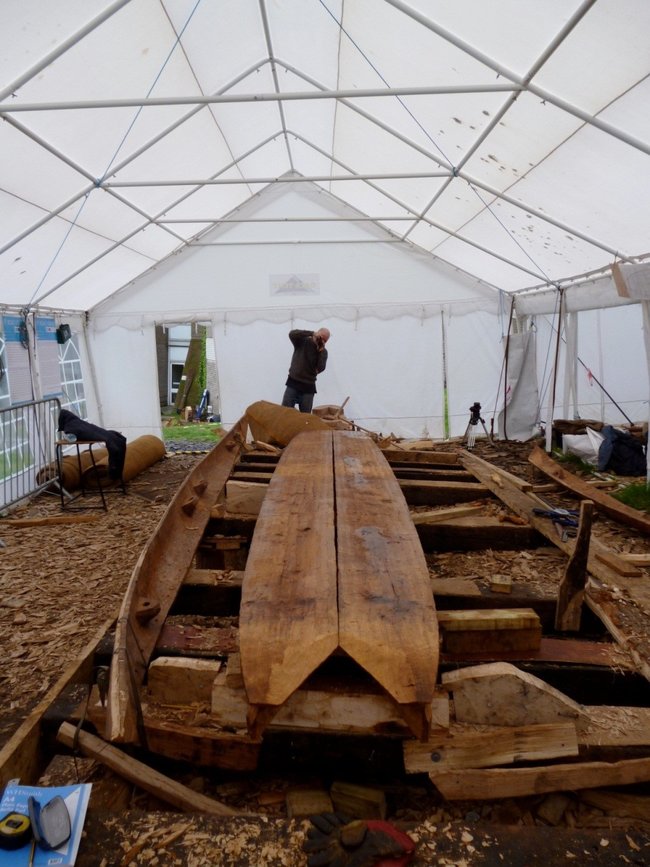
The underside of the 2 curved bottom planks (producing the rocker in the boat), and a side plank, of the half-scale reproduction of the Dover Bronze-Age boat, Dover 2012. The v-shaped gap at this end is where the bow piece of the boat will be fitted. Trevor Marsden is taking a photo, photo © Rachel Head.
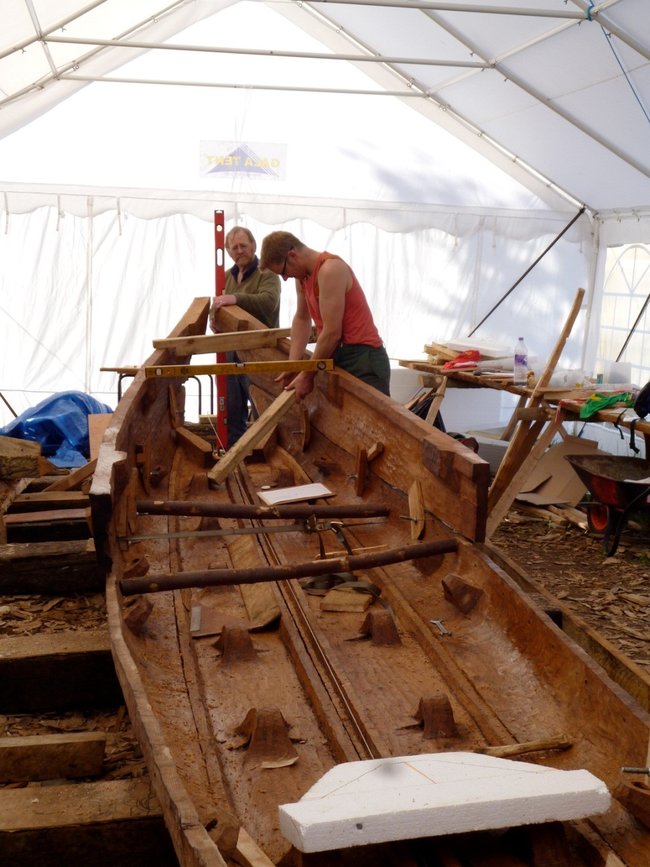
Richard and Robin Wood aligning the side planks so that the joint between the side planks and the ile can be marked. This allowed the ile to be shaved down so that it fit properly before the rebates are cut, Dover 2012. The polystyrene template was used to define the angle of the bottom plank. Photo © Rachel Head.
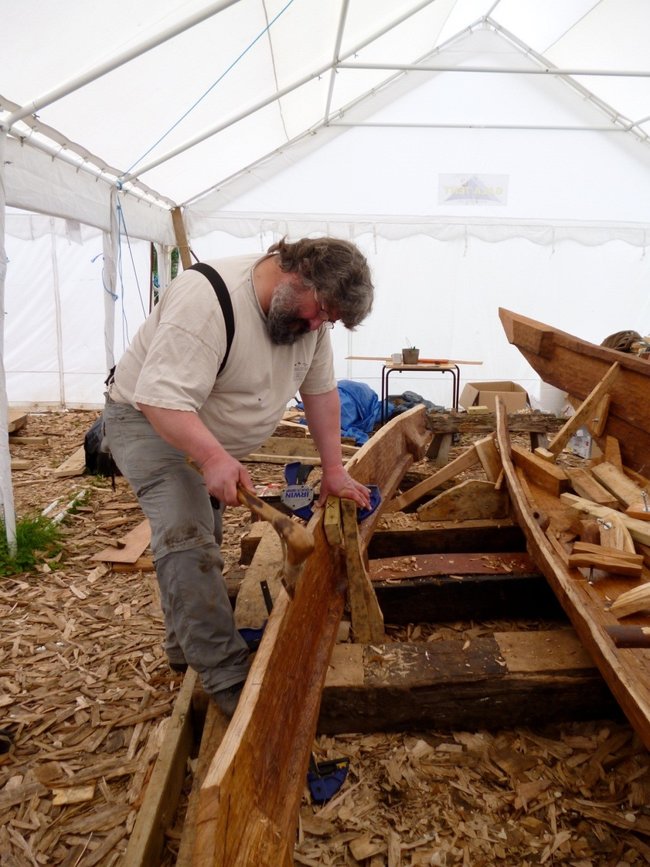
Damian Goodburn cutting a rebate on a side plank, Dover 2012. The parallel sideplank already has rebate. Photo © Richard Darrah.
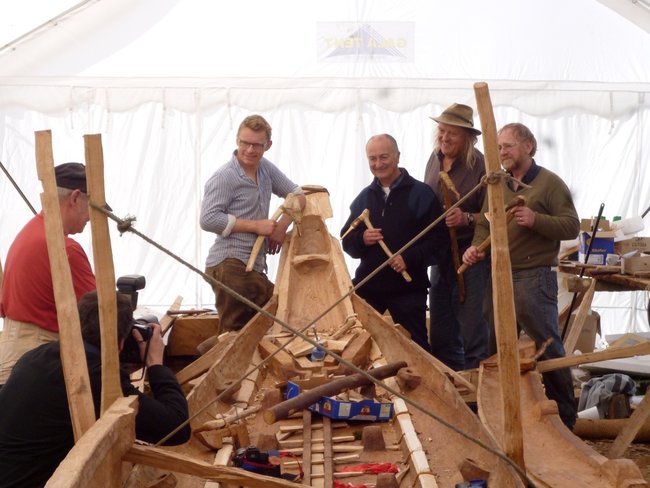
Terry Buchan and another photographer doing a photoshoot for the Dover Boat. Robin Wood, Tony Robinson, Phil Harding and Richard Darrah pose with tools, Dover, May 2012. Photo © Trevor Marsden.
- To test how heat may have been used to bend solid timbers into the correct 3-dimensional shapes
- By heating the oak to between 70 and 80 degrees centigrade we were able to bend the timbers to shape to give the boat its rocker (the longitudinal curvature of the boat)
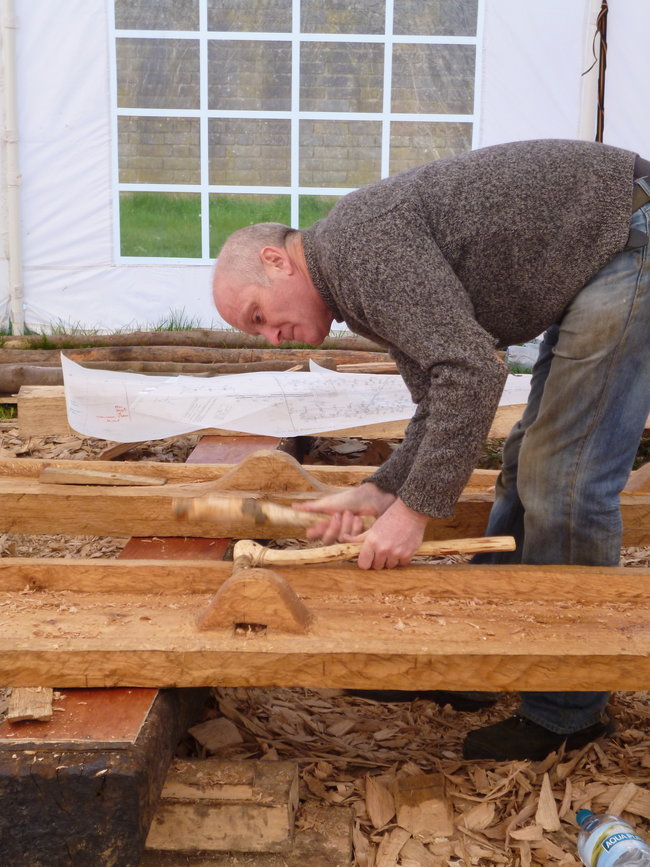
Trevor Marsden hewing out the cleates on the bottom plank of the Dover Boat half scale reproduction. Dover, Spring 2012. Photo © Rachel Head.
- Understand how the waterproofing of the boat’s seams, using moss and beeswax, may have worked in the original boat
- We plan to assess this once the dover boat has finished as an exhibition piece (as it has to be dismantled between museums when moved at present, so permanent sealant is not possible)
- To understand how the boat would have worked at sea, as a half-scale model, given that this was probably a seafaring boat able to cross the channel
- We also plan to assess this once the dover boat has finished as an exhibition piece (as it has to be dismantled between museums when moved at present it is not seaworthy)
Robin Wood stitching the boat with twisted withies, Boulogne-Sur-Mer June 2012. Photo © Richard Darrah.
Why did the Dover Boat not float?
As the Dover boat was going to be dismantled in order to get it into the exhibition space in Boulogne-sur-Mer it was not possible to finish and waterproof the seams – if we had done this we would have had to damage the boat in order to separate the sections and move it into the space for the exhibition. For this reason we sealed the seams by using mastic under lathes outside the seams, so that these could be broken without damaging the boat. Unfortunately these failed when the boat was first launched in Dover harbour. Once the exhibitions have finished we aim to properly seal the boat using moss and beeswax as were originally used. This will allow us to assess how the seal worked and also to test the sailing properties of the boat.
Academic talks
Richard gave a talk about the reconstruction in November 2012 at the British Museum: Darrah R. The reconstruction of the Dover Boat: What it tells about Bronze Age Craft Skills. Craft and People: Agents of Skilled Labour in the Archaeological Record. International Conference, British Museum, London 1st and 2nd November 2012. For details of the conference, and the abstract book, see http://craftandpeople.wordpress.com/.
Short YouTube video of Robin Wood using an adze to carve the ile to shape: https://www.youtube.com/watch?v=nFt5H6VOdUQ
Dover Community Radio interview on the Dover Boat reconstruction from 25 April 2012: https://www.youtube.com/watch?v=nOeCHIRcBeg
For press coverage of the reconstruction see:
Canterbury Archaeological Trust March 2012 press release
Archaeology in Europe News, May 2012
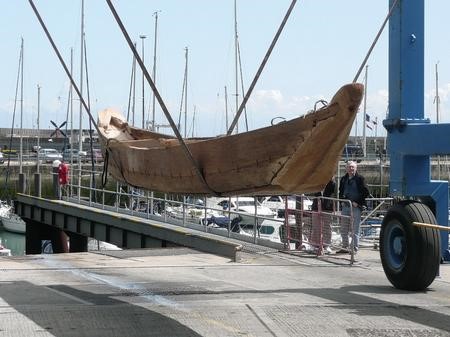
Dover boat half scale reproduction, being lowered into the water. Dover, May 2012. Photo © KentOnline
2. The Ferriby Boat
The Ferriby boat is a Bronze Age boat. During a half size reconstruction Richard supervised the shaping of the timbers, in 2000.
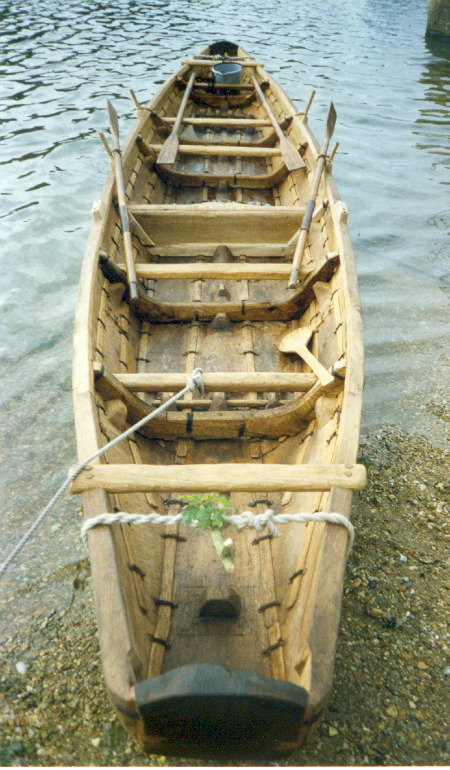
The half-size Ferriby boat reconstruction, Southampton, 2002. Photo © Richard Darrah
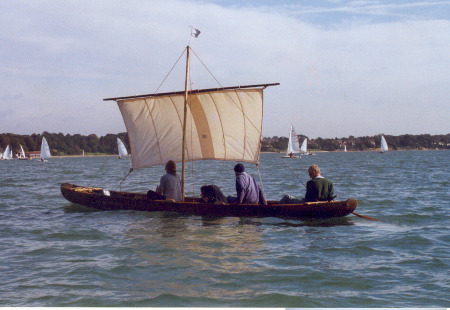
Sailing in the half-size Ferriby boat reconstruction, Southampton, 2003. Photo © Edwin Gifford.
For more detail of the Ferriby Boat half-scale reconstruction see Gifford E, Gifford J, Coates J. Chapter 9, The construction and trials of a half-scale model of the Early Bronze Age ship, Ferriby 1, to assess the capability of the full-size ship. In: Blue L, Hocker F, Englert A eds. Connected by the sea: proceedings of the tenth international symposium on boat and ship archaeology, Roskilde 2003. Oxford, Oxbow Books 2006.
Also, http://www.ferribyboats.co.uk/reconstruction/index.html.
3. The Canewdon Paddle
The Canewdon Paddle is a Bronze Age oak paddle, which was found in Essex. Richard was involved in a full size reconstruction of the paddle in 2003. He found that the reconstruction weighed over 4kg and was too heavy to have been used as a paddle. The 'paddle' must have been an oar instead (an oar pivots around a centre or rollock, and so does not have to be supported entirely by the wielder). There are two types of oars, steering oars and normal oars, the 'paddle' is perfectly weighted to be a normal oar. This makes it a very important find, as it is the earliest example of oars being used in Northern Europe.
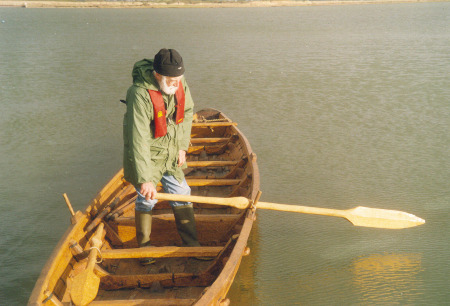
The reconstructed Canewdon Paddle being held by Edwin Gifford who funded the project, Southampton 2003. Photo © Edwin Gifford.
The reconstructed paddle and the original paddle are held by the National Maritime Museum (Royal Museums Greenwich)
4. Seahenge
Richard has demonstrated woodworking techniques on several archaeological television programs. In 1999 Richard was involved in the Time Team Christmas special, in which a life size reconstruction of Seahenge was undertaken.
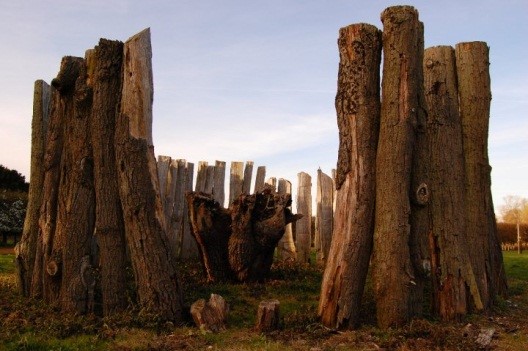
Seahenge reconstruction. Photo © Lynn Museum.
